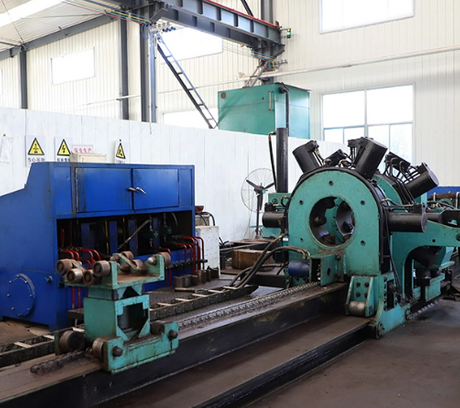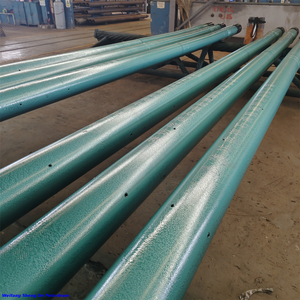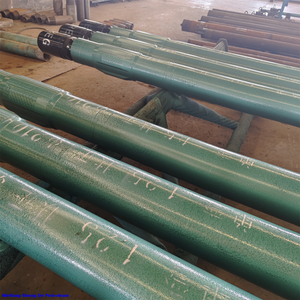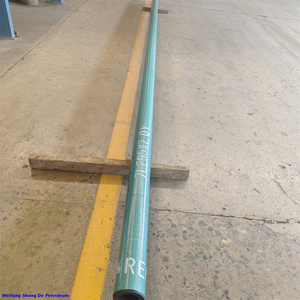You use a drilling jar to help free stuck drill strings. It also helps make drilling work faster and better. Top companies like Shengde make these tools. They design them to be safe and dependable. New ideas make drilling jars work even better. These changes also help protect the environment. They let you work well in tough drilling places.
Key Takeaways
Drilling jars are important tools. They help free stuck drill strings. This makes drilling faster and easier.
There are two main types of drilling jars. These are mechanical and hydraulic. Pick the right type for the well depth. Also, think about the pressure for best results.
Check and maintain drilling jars often. This keeps them safe and reliable. It also helps avoid expensive delays when drilling.
Drilling Jar Function and Mechanism
Main Purpose in Drilling
A drilling jar helps free stuck drill strings. It works like a hammer. It hits the drill string or stuck pipe with strong force. Sometimes, drill strings get stuck because of problems like pack-off or junk in the hole. These problems can stop your drilling work. Drilling jars are important in the bottom hole assembly (BHA). You put them in the top part of the BHA. They usually go inside drill collars or heavy weight drill pipe. This spot lets you hit the stuck part with force.
Tip: Always put the drilling jar above where it might get stuck. This way, you can use it if the drill string gets trapped.
Here is a table that shows what drilling jars do:
Function | Description |
Upward Jarring | Sends force up to free pipes stuck at the bottom. |
Downward Jarring | Sends force down to free pipes stuck off-bottom or in key seats. |
Drilling jars help save time. For example, hydraulic jars helped Transocean drill faster in the Gulf of Mexico. Many teams use these tools to avoid delays and finish jobs quicker.
How Drilling Jars Work
Drilling jars use energy from the drill string. You pull or push the drill string to build tension. The jar holds this energy and then lets it go fast. This makes a strong hit to free stuck tools. The table below shows the main parts:
Component | Function |
Anvil | Takes the force when the jar hits. |
Impact Mechanism | Makes the force needed to free stuck pipes. |
There are two main kinds of drilling jars: hydraulic jars and mechanical jars. Hydraulic jars use oil to work. When you pull the drill string, the piston moves up inside the jar. Oil moves through a small space and slows the piston. When the piston reaches a bigger space, it moves faster and hits the anvil hard. Mechanical jars use set tension to make force. You set the tension, and the jar releases it to free stuck pipes.
Here is a table that compares the two types:
Mechanism Type | Description |
Hydraulic Jar | Uses oil to make a jarring hit with fluid movement. |
Mechanical Jar | Uses set tension to make a strong hit during drilling. |
You get more force by pulling harder. The harder you pull, the stronger the hit. This lets you control how much force you use.
Drilling jars from Shengde, have new safety features. These features help stop equipment from breaking and keep workers safe. For example, safety locks open only with enough pressure and close by themselves when pulling out. JarMax technology lets the jar go before you pull too hard, so nothing breaks. Inside safety locks keep the PowerStroke open when needed, making work safer.
Types and Uses of Drilling Jars
Mechanical and Hydraulic Drilling Jars
There are two main kinds of drilling jars. These are mechanical jars and hydraulic jars. Each one works best in different drilling jobs. Mechanical jars use a simple tripping part. You set the tension, and the jar gives a strong hit when you pull enough. These jars work well in places with lower pressure and temperature. They are easy to use and do not break often. But, they do not let you control the force as much.
Hydraulic jars use oil to make a strong hit. You pull the drill string, and the jar waits to hit until oil moves through a small space. This wait lets you pick when and how hard the jar hits. Hydraulic jars work best in deep wells and high-pressure jobs. They can handle tough places and give you more control.
Here is a table that shows when to use each jar:
Jar Type | Preferred Scenarios | Key Features |
Mechanical jars | Lower pressure and temperature conditions | Reliable, simple mechanical tripping mechanism, lower force ratings, less precise control. |
Hydraulic jars | High-pressure and deep well applications | Precise, controlled impacts, adjustable delay mechanism, higher pressure ratings, withstands extreme conditions. |
You should look at well depth, pressure, and temperature to pick the right jar.
Applications in drilling operations
Drilling jars help fix many problems while drilling. The most common job is freeing stuck drill pipes. When the drill string gets stuck from pressure or cuttings, you use the jar to give a quick hit. This can save time and money.
You also use drilling jars for fishing jobs. Fishing jars help get back lost or stuck tools. You may need jars for cutting, cementing, and coring jobs too. These tools help you work faster and avoid expensive fishing jobs.
Here are some ways you use drilling jars:
Note: Using drilling jars for these jobs helps you finish faster and lowers the chance of delays.
Benefits and Drawbacks
Drilling jars have many good points for drilling. You get better drilling because jars and shock subs help with stuck pipe risks. You also get the best jar use since less vibration keeps the jar working well.
Here is a table that shows the main benefits:
Combined Benefit | Description |
Enhanced Drilling Efficiency | The integration of drilling jars and shock subs allows for proactive management of stuck pipe risks. |
Optimal Jar Performance | Reduced vibrations help maintain the integrity of the drilling jar, ensuring it functions when needed. |
Drilling jars make a strong hit to free stuck pipes. This saves time and money. You can avoid losing tools and production, which can cost a lot.
Benefit | Description |
Impact Force Generation | Drilling jars create a sudden impact to free stuck pipes, reducing non-productive time significantly. |
Cost Savings | Effective use can save millions in lost equipment and production due to reduced downtime. |
Safety is another big benefit. Shock subs lower bad vibrations, making work safer. The bottom hole assembly stays safe from damage.
Safety Aspect | Description |
Vibration Mitigation | Shock subs reduce harmful vibrations, lowering the risk of stuck pipes and enhancing safety. |
BHA Protection | The combination of tools protects the Bottom Hole Assembly (BHA) from operational vibrations. |
There are some problems with drilling jars. Sometimes jars do not hit at the right force. You need to check sensors and look at hydraulic parts often. Software updates keep systems working well. Complex jars need special skills to use and fix. Bad care can mean more costs and longer delays.
Drawback/Challenge | Description |
Misfires in jars | Failure to trigger at the correct force level. |
Inconsistent jar activation | Variability in performance, leading to unreliable operation. |
Routine calibration | Ensures the accuracy of the sensors and load cells. |
Inspection of hydraulic systems | Checks for leaks or wear in hydraulic pumps. |
Software updates | Keeps automated systems running smoothly with the latest tech. |
If you pick the drilling jar from Shengde, you get better control. You can change the timing and strength of the hit for careful jobs. The jar works smoothly and lowers sudden stress. You spend less time fixing it because there are fewer moving parts. The jar works well in deep wells, even with high tension and pressure.
Feature | Benefit |
More Precise Impact Control | Allows for accurate control of timing and magnitude of impact, crucial for sensitive operations. |
Smoother Operation | Reduces sudden mechanical stress, leading to smoother engagement and release. |
Lower Maintenance Requirements | Fewer moving parts result in less wear and reduced servicing frequency. |
Consistent Performance in Deep Wells | Ensures reliable activation under high tension and compression forces, enhancing durability. |
Tip: You can make work safer and faster by picking a drilling jar with good safety features.
You should always match the jar to your drilling job and do regular checks. This helps you avoid delays and keeps your team safe.
Conclusion
You use drilling jars to make drilling safe and quick. Good jars, like those from Weifang Shengde, help stop accidents and save money. Here is how they help with safety:
Aspect | Description |
Role in Safety | Stops accidents by freeing stuck drill strings. |
Reliability | Works well even in hard drilling places. |
Impact on Costs | Cuts downtime and helps save money. |
When picking a drilling jar, think about these things:
Jar type and how hard it hits
Where you put it in the BHA
How strong and tough it is
How deep the well is and the ground type
Safety parts
You pick the best jar by thinking about what you need and how to stay safe.
FAQ
What is the main job of a drilling jar?
You use a drilling jar to free stuck drill pipes. It gives a strong hit to help you keep drilling without long delays.
How do you know which drilling jar to pick?
You look at the well depth, pressure, and job type. You choose a jar that matches your drilling needs and safety rules.
Can you use a drilling jar more than once?
Yes, you can use a drilling jar many times. You should check it often to make sure it works well and stays safe.



















